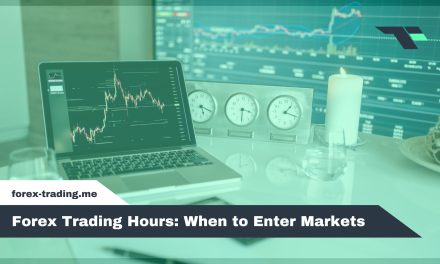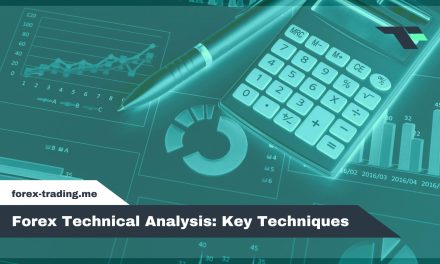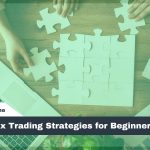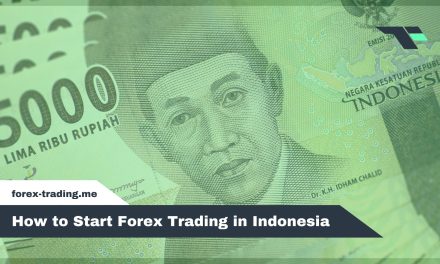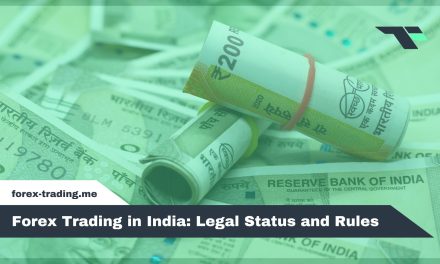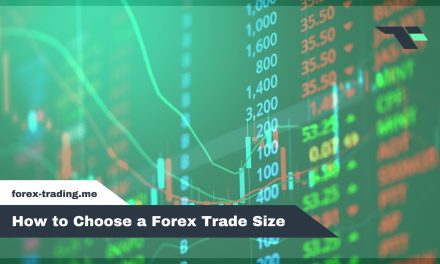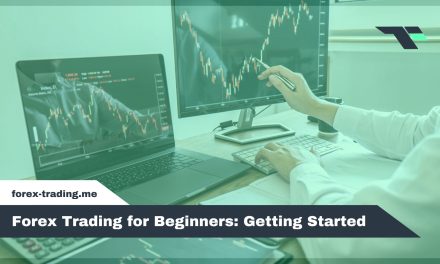
Forex Trading Robots: Do They Work?

Forex trading robots can work effectively, but their success depends on multiple factors including algorithm quality, market conditions, and proper configuration. These automated systems excel at emotion-free execution, 24/5 market coverage, and consistent strategy application across varying conditions. However, risks include over-optimization, system failures during critical moments, and poor performance during market regime shifts. Performance metrics show profit factors above 1.5 indicate acceptable results, while drawdowns below 20% suggest reasonable risk management. Understanding these nuances reveals the complete picture of automated trading effectiveness.
Table of Contents
How a Forex Trading Robot Works
A forex trading robot functions as an automated trading system that executes buy and sell orders based on predetermined algorithmic strategies, eliminating the need for constant human monitoring. These systems integrate several key components, including market analysis modules, risk management protocols, and execution engines that work together to identify trading opportunities and manage positions. The algorithmic strategies operate by processing real-time market data through mathematical models and technical indicators, allowing the robot to make trading decisions according to its programmed parameters.
What is an automated trading system?
Evolution from manual execution to software-driven decisions has fundamentally transformed how retail traders participate in the forex market. An automated trading system (ATS) represents sophisticated software that executes trades based on predetermined parameters without human intervention. These systems analyze market conditions, identify opportunities, and place orders automatically through integrated trading platforms.
The development of ATS technology follows three distinct phases:
- Institutional dominance (1990s-2000s) – Banks pioneered automated systems, with ATS handling over 80% of institutional FX flow by 2010
- Retail platform integration – MT4 and similar platforms introduced fully automated order placement capabilities for individual traders
- Algorithm accessibility – Pre-built trading robots became available to retail participants, democratizing sophisticated execution strategies
Modern ATS operates through direct platform integration, enabling continuous market participation while eliminating emotional decision-making from trading processes.
Key components of a trading robot
Understanding automated trading systems requires examining the technical architecture that enables robots to function independently in live market conditions. A typical Expert Advisor (EA) integrates at least three essential modules: entry logic, money management, and trade execution. The signal generator serves as the brain, analyzing market data through technical indicators, price patterns, or fundamental analysis to identify trading opportunities. Risk parameters within the money management module determine position sizing, stop-loss levels, and maximum drawdown thresholds to protect capital. The order management system handles trade execution, monitoring open positions and implementing exit strategies. High-performance backtesting engines can simulate over 1,000 bars per second, allowing developers to test strategies across extensive historical data. The execution engine connects to brokers’ APIs, ensuring trades are placed with minimal latency and slippage.
Algorithmic strategies in action
Modern forex trading robots execute distinct algorithmic strategies that determine how they interpret market data and generate trading signals. These automated systems employ different approaches based on market conditions and programmed objectives.
The most prevalent strategies include:
- Trend-following algorithms – Account for approximately 40% of institutional algorithmic forex volume, identifying and riding momentum-based price movements
- Scalping systems – Hold positions for seconds to minutes, targeting small gains of 5-10 pips per trade through rapid execution
- Mean reversion strategies – Capitalize on price deviations from historical averages, assuming currencies will return to equilibrium levels
Each strategy responds differently to market volatility and timeframes. Trend-following robots excel during sustained directional movements, while scalping algorithms thrive in sideways markets with frequent price fluctuations. Arbitrage systems exploit price discrepancies across different brokers or currency pairs simultaneously.
Top Forex Trading Robot Picks
When evaluating the landscape of automated trading solutions, certain expert advisors consistently demonstrate superior performance through rigorous backtesting and live account results. The most effective forex trading robots typically incorporate advanced risk management protocols, adaptive algorithms that respond to changing market conditions, and transparent performance metrics that allow traders to assess their true profitability. A thorough comparison of leading EAs reveals significant variations in monthly returns, drawdown levels, and consistency across different market environments, making careful selection essential for trading success.
Which expert advisors stand out?
How can traders distinguish genuine performers from the countless forex robots flooding the market? Several expert advisors demonstrate exceptional characteristics that separate them from inferior alternatives.
The standout EAs share three critical performance indicators:
- Risk Management Excellence – Leading expert advisors maintain drawdowns under 10% during volatile market months, protecting capital during turbulent periods.
- Multi-Currency Capability – Popular EAs support over 20 currency pairs simultaneously, providing diversified trading opportunities across different markets.
- Comprehensive Support Infrastructure – Top-tier robots offer robust broker compatibility and responsive customer support, ensuring seamless integration and ongoing assistance.
These metrics help traders identify reliable automated systems. Signal quality remains paramount, as consistent performance across various market conditions distinguishes professional-grade EAs from amateur alternatives. Thorough evaluation of these factors enables informed selection decisions.
Features that define a winning robot
Successful forex trading robots exhibit several core features that distinguish them from inferior alternatives and determine their long-term profitability. Adaptive algorithms represent the foundation, enabling systems to adjust parameters based on changing market conditions rather than relying on static rules. Walk-forward optimization enhances performance by testing strategies on out-of-sample data, potentially improving results by 15 percent compared to basic backtesting methods.
| Feature | Poor Implementation | Winning Implementation |
|---|---|---|
| Risk Management | No drawdown limits | Daily cap at 1-2% equity |
| Optimization | Curve-fitted backtests | Walk-forward testing |
| Algorithm Type | Static rule-based | Adaptive parameters |
| Market Adaptation | Single strategy | Multiple conditions |
| Performance Metrics | Profit-only focus | Risk-adjusted returns |
Effective risk controls cap daily drawdowns between one and two percent of total equity, protecting capital during adverse market movements while maintaining consistent performance expectations.
Comparing bot performance metrics
Several critical performance metrics enable traders to evaluate and compare forex trading robots objectively, moving beyond superficial profit claims to assess genuine risk-adjusted returns.
The Sharpe ratio measures risk-adjusted performance, indicating how much excess return an EA generates per unit of risk. Maximum drawdown reveals the largest peak-to-trough decline, showing potential capital losses during adverse periods. The profit factor divides gross profits by gross losses, providing insight into overall profitability.
Key benchmarks for evaluating forex robots include:
- Profit factor above 1.5 indicates acceptable performance, while values exceeding 2.0 signal excellent results
- Win rates typically range from 40-60% for automated systems, with consistency mattering more than peak percentages
- Maximum drawdown below 20% suggests reasonable risk management and capital preservation
These metrics, analyzed together, provide thorough insight into a robot’s true performance potential and risk profile.
Forex Trading Robot Free Download Tips
Finding reliable free forex trading robots requires careful navigation of reputable platforms, particularly the MT4 marketplace where over 1,000 free robot listings compete for attention alongside community forums that host user-generated content. Successful traders employ systematic vetting checklists to evaluate each potential download, examining developer credentials, update frequency, and user feedback before installation. Thorough demo testing serves as the critical final filter, allowing traders to assess robot performance under realistic market conditions without risking actual capital.
Where to find reliable MT4 robots?
When searching for reliable MT4 robots, traders should prioritize established platforms that offer transparency through user feedback and performance data. These platforms provide essential verification mechanisms that help distinguish legitimate solutions from ineffective alternatives.
The most reputable sources include:
- MQL5.com – Features over 500 free Expert Advisors with thorough user ratings, detailed comments, and performance metrics from real traders
- Community-driven repositories – Often include monthly update logs, source code transparency, and active developer support for troubleshooting
- Established forex forums – Provide peer reviews, backtesting results, and discussions about robot performance across different market conditions
These platforms typically maintain quality standards through moderation systems and community oversight. Traders should examine download statistics, recent updates, and user feedback patterns before selecting any automated trading solution for their MT4 platform.
Checklist for vetting free downloads
Before downloading any free forex trading robot, traders must implement a systematic vetting process to protect themselves from malicious software, ineffective algorithms, and potential financial losses. This process involves examining source code, analyzing user feedback, and verifying performance records.
| Vetting Criteria | Assessment Method |
|---|---|
| Code Security | Run automated scanners to detect 90% of malicious scripts |
| User Reviews | Verify genuine feedback mentioning support responsiveness |
| Track Record | Request live trading statements, not backtests |
| Update Frequency | Check developer’s commitment to ongoing maintenance |
| Support Quality | Test response times and technical assistance quality |
Code audits reveal potential security vulnerabilities, while genuine user reviews provide insights into real-world performance. Live track records demonstrate actual profitability beyond theoretical backtesting results. Thorough vetting greatly reduces risks associated with free robot downloads.
Best practices in demo testing
Once traders complete the vetting process for free forex robots, proper demo testing becomes the next vital checkpoint for evaluating performance under simulated market conditions. This phase provides significant insights into actual functionality before risking real capital on unproven systems.
Effective demo testing requires structured approaches that mirror live trading environments:
- Extended Testing Duration – Run demos for at least 30 days across varying market conditions, including high volatility periods and trending phases
- Realistic Parameter Settings – Configure lot sizes, spreads, and commission structures that match intended live account specifications
- Execution Quality Assessment – Monitor order fills and timing while accounting for differences between demo and live environments, particularly regarding slippage
Demo environments typically offer ideal execution conditions that rarely reflect real-world trading scenarios, making adjustment of performance expectations essential for accurate evaluation.
Evaluate Forex Trading Robot Performance
Evaluating forex trading robot performance requires analyzing specific metrics that reveal true profitability and risk management capabilities, rather than relying on superficial statistics that vendors often highlight. Traders must understand the significant differences between backtest results, which represent historical simulations, and live trading performance, which involves real market conditions and execution delays. A systematic approach to performance analysis helps identify common misleading practices, such as cherry-picked timeframes or curve-fitted strategies, that can mask underlying flaws in automated trading systems.
Which metrics matter most?
How can traders distinguish between genuinely effective forex robots and those that merely appear successful through clever marketing? The answer lies in focusing on specific performance metrics that reveal true robustness rather than superficial appeal.
Three critical metrics demand attention when evaluating trading robots:
- Compound Annual Growth Rate (CAGR) – Results exceeding 20% annually indicate exceptional performance for retail EAs, though sustainable growth matters more than spectacular short-term gains.
- Maximum Drawdown – Professional traders typically consider drawdowns under 15% acceptable, as this metric reveals how much capital the robot risks during losing streaks.
- Profit Factor and Expectancy – These metrics demonstrate the robot’s ability to generate consistent profits over time, indicating whether winning trades sufficiently outweigh losses.
Interpreting backtest vs live results
Most forex trading robots demonstrate impressive backtested performance that fails to materialize in live trading environments, creating a disconnect that traders must understand to avoid costly mistakes. On average, live performance drops 10–30% below backtested results due to slippage and spread widening during actual market conditions. This discrepancy stems from overfitting, where robots are over-optimized for historical data rather than market realities. Poor data quality in backtests compounds these issues, as simulated conditions rarely reflect true trading costs and execution delays. However, backtests using tick-level data can reduce curve-fitting errors by up to 50%, providing more realistic performance expectations. Traders should scrutinize backtest assumptions, account for transaction costs, and demand forward-testing results before evaluating any trading robot’s true potential.
Common pitfalls in performance analysis
When evaluating forex trading robot performance, traders frequently fall victim to sophisticated marketing tactics that obscure genuine results through selective data presentation and statistical manipulation. These deceptive practices create inflated expectations and mask underlying risks that could lead to substantial losses.
Common analytical pitfalls include:
- Cherry-picking favorable time periods while excluding losing months, which artificially inflates perceived performance by 20–40%
- Drawdown masking that conceals the maximum capital loss experienced during trading sequences
- Curve fitting and sample bias where robots are over-optimized for specific market conditions that may not repeat
Research indicates nearly 60% of commercial expert advisors on marketplaces show signs of backtest over-optimization. Traders must scrutinize complete performance histories, including unfavorable periods, to make informed decisions about robot effectiveness.
Benefits and Risks of Forex Trading Robots
Forex trading robots offer compelling advantages such as 24/5 market coverage, emotion-free execution, and lightning-fast order processing that can occur within 10 milliseconds. However, these automated systems carry significant risks including over-optimization that may lead to drawdowns exceeding 30% in live trading conditions, along with potential mechanical failures and strategy obsolescence. The choice between paid and free trading bots introduces additional trade-offs regarding reliability, support quality, and performance transparency that traders must carefully evaluate.
What advantages do bots offer?
Speed emerges as perhaps the most compelling advantage that forex trading robots deliver to modern traders. These automated systems execute trades within milliseconds of identifying opportunities, far surpassing human reaction times when market conditions shift rapidly.
The primary advantages include:
- Simultaneous Multi-Pair Trading – Bots can scan and trade dozens of currency pairs simultaneously, unlike manual traders who typically focus on limited positions
- Emotional Discipline – Removing human emotion can reduce impulsive trades by up to 70%, maintaining strict adherence to predetermined strategies
- Round-the-Clock Operation – Automated systems monitor markets continuously across different time zones, capturing opportunities during overnight sessions when traders sleep
These capabilities provide consistency and scalability that manual trading cannot match, allowing unattended trading operations that maintain systematic approaches regardless of market volatility or trader availability.
Typical risk factors to watch
Despite these operational advantages, forex trading robots carry substantial risks that can rapidly erode trading capital if left unchecked. Over-optimization represents a primary concern, where bots perform exceptionally on historical data but fail in live markets due to curve-fitting. System failures can occur during critical trading moments, leaving positions unmanaged. Market regime shifts pose another significant threat, as strategies optimized for trending markets may struggle during ranging conditions.
| Risk Factor | Potential Impact |
|---|---|
| Over-optimization | Poor live performance despite strong backtests |
| System failure | Unmanaged positions during critical moments |
| Market regime shift | Strategy breakdown in different conditions |
| Black-swan events | Compounded losses without monitoring |
Sudden market shifts during holidays or news events can increase drawdowns by 50%. Unmonitored bots operating during black-swan events risk compounding losses exponentially, making continuous oversight essential for capital preservation.
Paid vs free bot trade-offs
The marketplace for trading robots presents traders with a fundamental choice between commercial solutions and free alternatives, each carrying distinct advantages and limitations that directly impact long-term performance. Paid EAs typically offer extensive support structures and regular updates that extend their useful lifespan by 12-18 months, while free robots often lack essential documentation and ongoing development.
Key differences include:
- Support Quality: Commercial EAs provide customer service and troubleshooting assistance, whereas free alternatives rely on community forums.
- Update Frequency: Over 60% of free bots receive no updates after initial release, limiting adaptability to changing market conditions.
- Cost-Benefit Analysis: While paid solutions require upfront investment, they often deliver better long-term value through sustained performance optimization.
These factors greatly influence the robot’s effectiveness and trader success rates.
Should You Use a Forex Trading Robot?
The decision to use a forex trading robot depends on individual trading goals, risk tolerance, and market conditions, as surveys indicate only 30% of retail traders using automated systems report consistent monthly profits. Different trader profiles benefit from automation to varying degrees, with some finding robots suitable for specific strategies while others prefer maintaining direct control over their trades. Manual trading continues to demonstrate advantages in unpredictable, low-liquidity situations where human adaptability outperforms algorithmic responses by approximately 15%, highlighting the importance of understanding when each approach proves most effective.
Is relying on trading robots wise?
How should traders determine whether automated systems align with their trading objectives and risk profiles? The decision requires careful evaluation of individual circumstances and realistic expectations about robot capabilities.
Successful automation depends on three critical factors:
- Risk management discipline – Traders who maintain structured risk protocols experience 25% fewer drawdowns when using Expert Advisors, demonstrating that automation amplifies existing trading discipline rather than replacing it.
- Regular performance monitoring – Over 50% of bot users fail to track performance consistently, resulting in preventable losses that could be avoided through systematic oversight.
- Realistic profit expectations – Understanding that robots excel at executing predefined strategies but cannot adapt to unprecedented market conditions helps traders set appropriate performance benchmarks.
Relying exclusively on automation without human oversight typically proves counterproductive for long-term trading success.
Ideal trader profiles for bots
Building on these foundational considerations, certain trader characteristics naturally align with automated trading systems while others may find robots counterproductive to their trading approach. Part-time traders, particularly busy professionals with limited market monitoring time, demonstrate strongest compatibility with automated systems, reporting a 40% increase in trading efficiency. Data-driven traders who prefer systematic approaches over emotional decision-making achieve 10% higher return consistency with automated systems compared to discretionary methods. Time-constrained individuals benefit greatly from robots’ ability to execute trades continuously without manual intervention. Conversely, discretionary traders who rely on intuition, market feel, and flexible strategy adaptation typically struggle with rigid automated parameters. Systematic thinkers who appreciate backtesting, quantifiable results, and rule-based trading find robots complement their analytical nature effectively.
Manual trading vs automated systems
While automated trading systems offer compelling advantages, the decision between manual and algorithmic approaches depends heavily on individual trading styles, available time, and market objectives. Manual trading currently accounts for approximately 20% of retail forex volume, though it exhibits higher variability in performance outcomes.
Each approach presents distinct characteristics:
- Manual Trading: Provides complete control and adaptability to unexpected market conditions, but requires constant monitoring and emotional discipline
- Automated Systems: Deliver consistent execution and eliminate emotional interference, yet may struggle with unprecedented market scenarios
- Hybrid Approaches: Combine algorithmic backing with discretionary oversight, producing 15% smoother equity curves according to trader reports
The best choice ultimately depends on individual circumstances, risk tolerance, and commitment levels rather than inherent superiority of either method.
Conclusion
Forex trading robots offer legitimate automation capabilities that can execute trades systematically and eliminate emotional decision-making. However, their effectiveness varies considerably based on market conditions, algorithm quality, and proper implementation. While some systems demonstrate consistent performance, others fail to deliver promised results. Success requires careful evaluation of historical performance, understanding inherent risks, and matching robot strategies to individual trading goals and risk tolerance levels.


